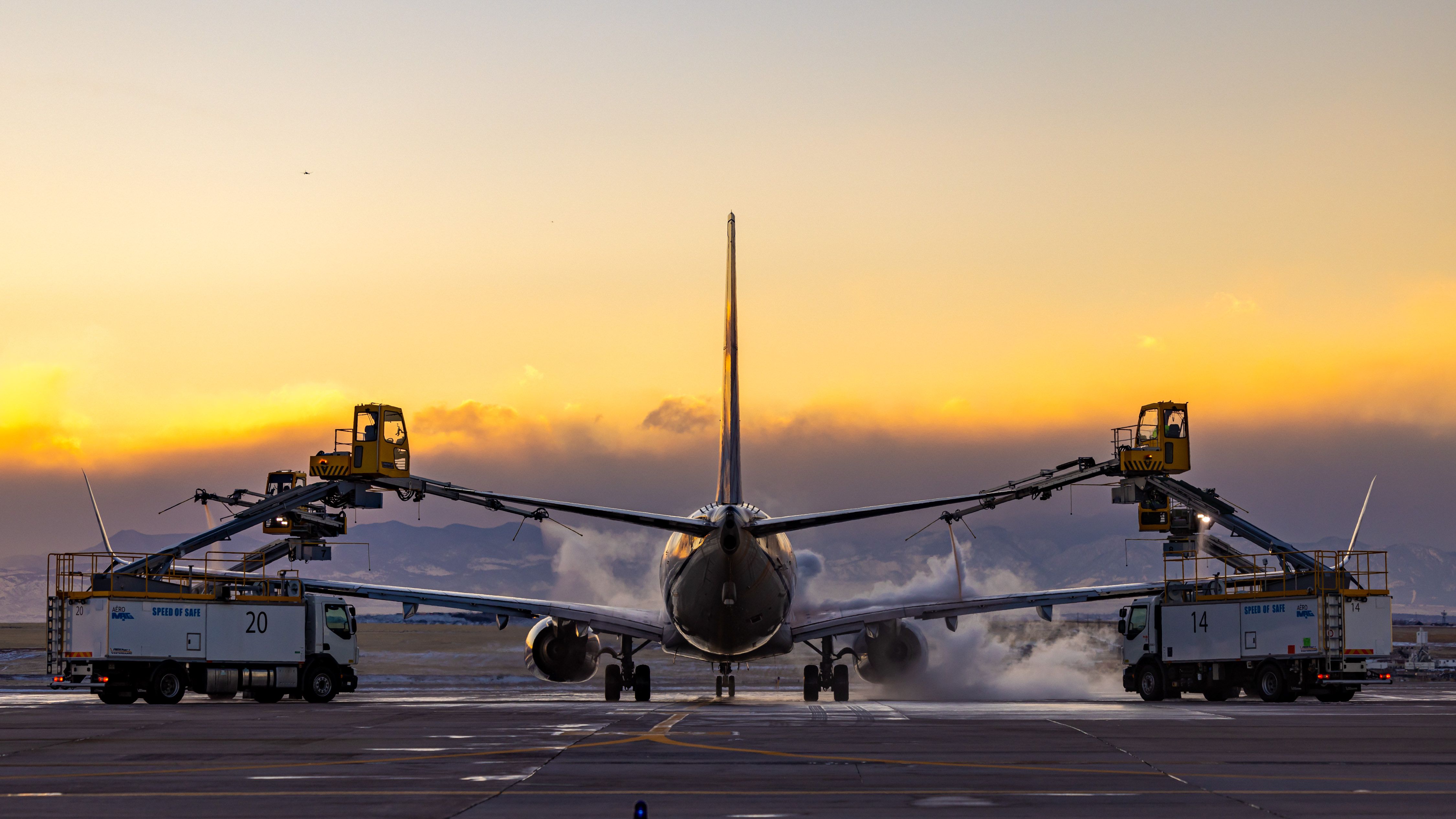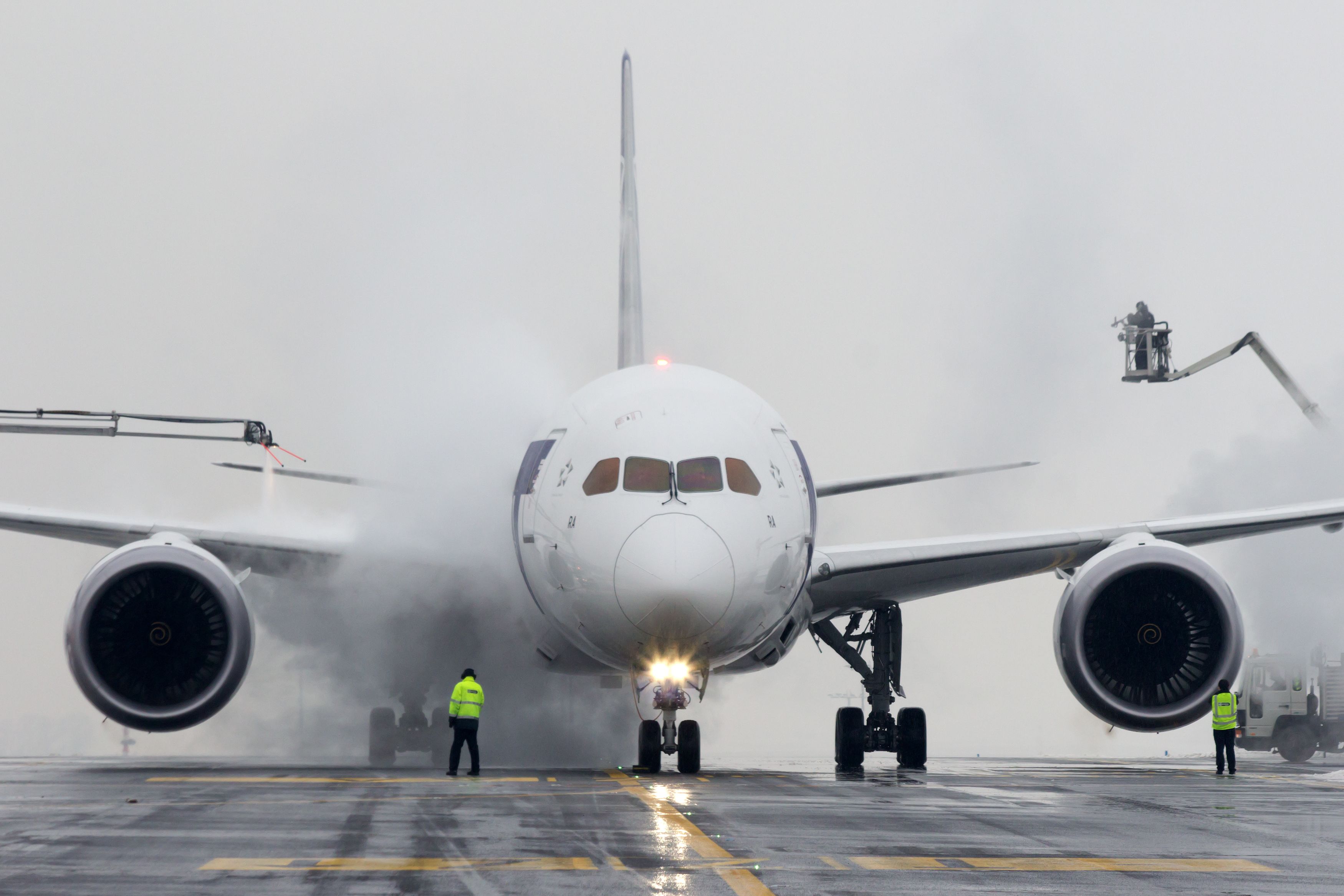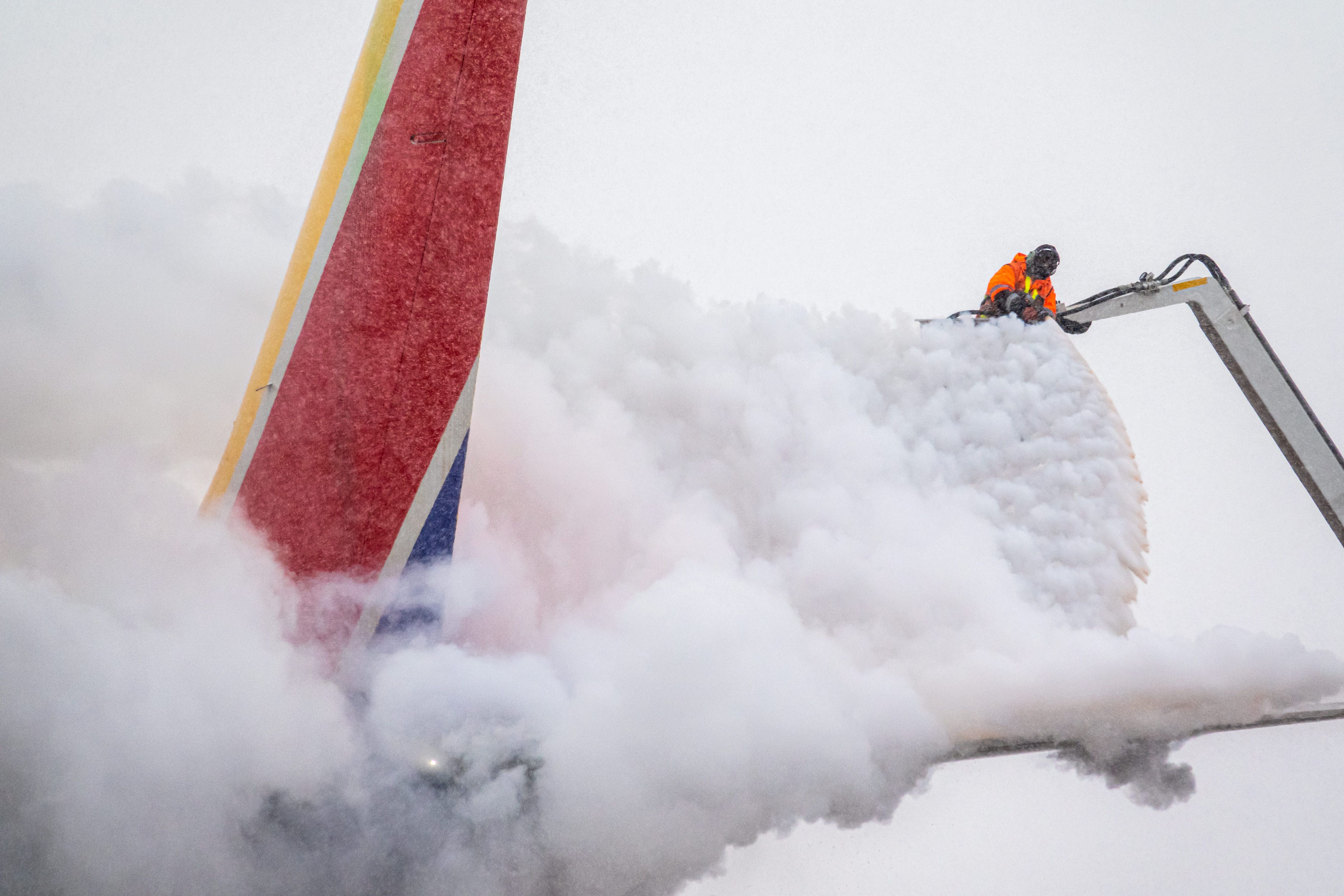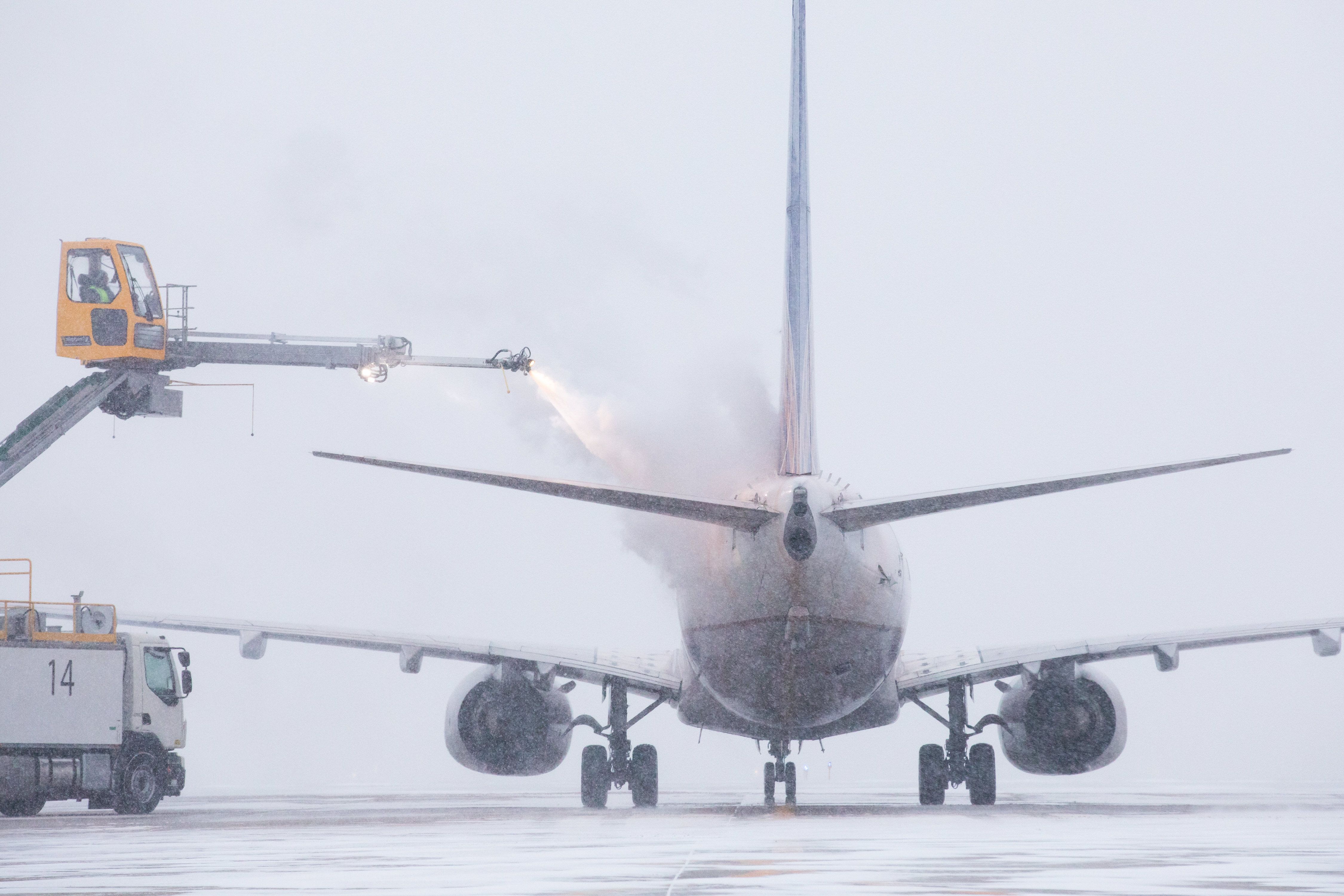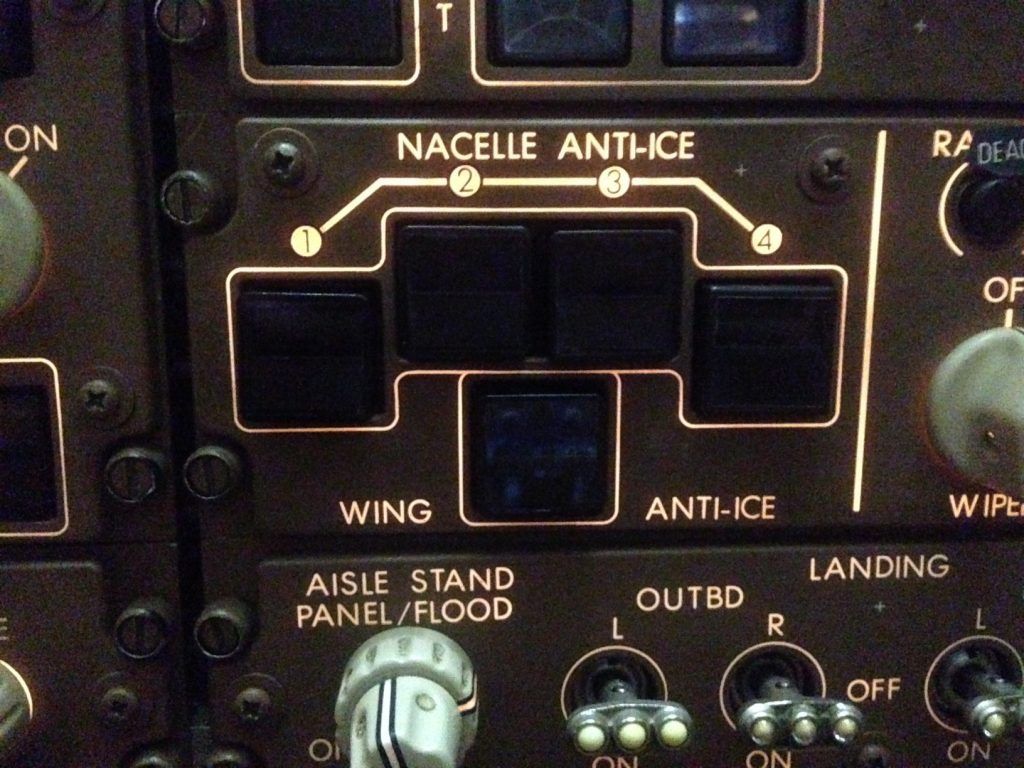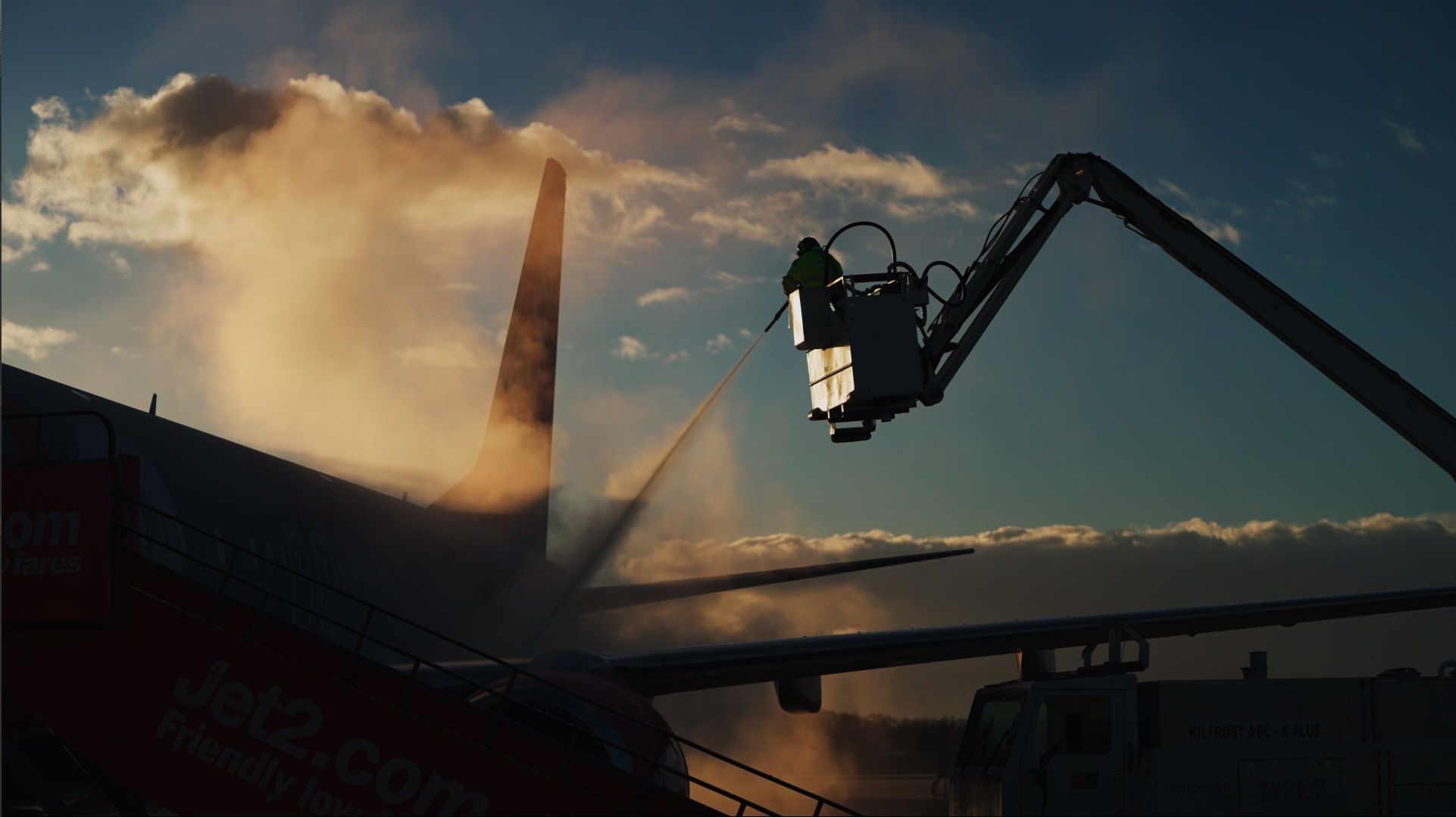Summary
- De-icing aircraft is crucial for safety and performance as ice on wings can affect aerodynamics, increase weight, and block vents or sensors.
- The de-icing process involves inspecting the aircraft for ice accumulation and then spraying it with a heated, glycol-water solution.
- Timing is important, as the treated aircraft must take off within a specific window called the "holdover time" to prevent ice from re-forming. In-flight de-icing systems also exist to melt ice at high altitudes.
Many frequent fliers have seen an aircraft being de-iced at an airport in winter or had to wait on the ground before departure while this takes place. Have you ever wondered how this happens and why airlines do this?
Why de-ice an aircraft?
Wings are the critical part of an aircraft that is de-iced before flight, but the tail and areas of the fuselage are also treated. The engines may also be affected by ice, but they generate massive amounts of heat and are capable of ingesting significant quantities of ice and rain with no adverse effects.
Want answers to more key questions in aviation? Check out the rest of our guides here.
Allowing ice to build up does not automatically impede flight, but it may affect safety and aircraft performance in several ways:
- Ice on the wings would affect the aerodynamics, potentially reducing lift or making flight less stable. Anything out of place or unexpected can affect the airflow over the wings and, of course, should be avoided.
- It would add weight to the aircraft, reducing performance and affecting calculations of fuel and range.
- Ice or snow could block vents or stop sensors from working correctly.
- And finally, any falling or breaking ice could damage the aircraft engines or airframe structure.
Snow and ice can cause massive disruptions. Having a quick and efficient process in place to deal with this is essential in busy airports.
Preparing to de-ice
De-icing aircraft on the ground is a well-defined process. The aircraft is first inspected to check for ice accumulation. If de-icing is required, a truck with de-icing equipment will be called.
Did you know we also have an aviation YouTube channel here?
The aircraft will be positioned in a suitable area, with adequate drainage to collect the liquid and drain away, keeping it away from anything that could unintentionally be affected. Sometimes, this can be at the gate area, but at other times, the aircraft is moved to a dedicated site, usually closer to the departure runway.
Spraying the aircraft
The aircraft will then be sprayed with a de-icing solution. This is typically a heated, glycol-water solution and will melt any ice accumulation. There are four types of solutions that can melt ice accumulation. Types II, III, and IV contain thickeners to prevent the liquid from immediately running off the surface and can be used in an anti-icing capacity.
Additionally, anti-icing solutions can be applied if there is a high chance of more ice forming before taxi and take-off. This is usually propylene glycol. Ethylene glycol is also used but is less common commercially as it contains more toxins. With a freezing point of -around -45 degrees Celsius, these will prevent any further precipitation from freezing in all but the most extreme conditions.
The crew will spray the wings from the wingtips inward, avoiding sensitive areas. The de-icing solution also contains a dye that will help indicate which areas have already been treated.
Timing is essential when de-icing. Once an aircraft has been treated, it will have a specific ‘holdover time’ within which it must take off. If it exceeds the window, a retreatment will be necessary. The treating chemicals will help prevent ice from re-forming, but only for a certain amount of time. Once airborne, the gel-like solutions will disperse so as not to affect the wing performance.
In-flight de-icing
As well as pre-flight de-icing, all large aircraft have systems for de-icing in flight. At high altitudes, any moisture that accumulates on aircraft wings can freeze, and this can have similar safety and performance implications.
Have you heard the Simple Flying podcast recently?
The most commonly used system passes hot air from the engines through a network of small tubes beneath the surface of the wings and the aircraft tail. This raises the temperature sufficiently to melt any ice that forms.
On smaller aircraft, there are also systems that use antifreeze solutions on the wings and propellers or electrical systems that use heated rubber surfaces.
De-icing for the future
The solutions can affect the local water supply if discharged directly in significant quantities by consuming oxygen in the water, adversely affecting fish and wildlife. The FAA last year directed that new airports with 10,000 annual departures located in certain cold climate zones are required to collect 60% of aircraft de-icing fluid after de-icing.
There are also new solutions being created. Kilfrost, one of the original de-icing companies, has produced a corn-based de-icing fluid that has been approved for airline use.
Would you like to share any knowledge or stories related to aircraft icing? Feel free to share in the comments.

